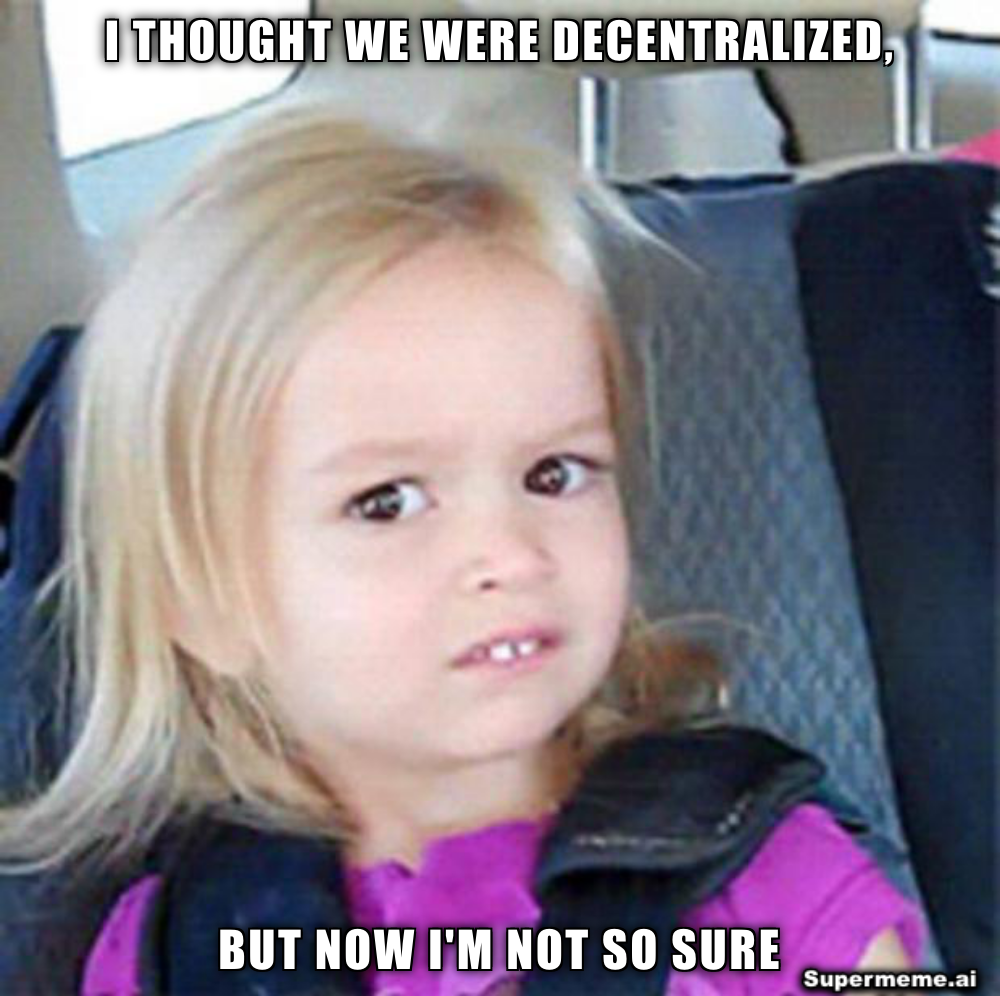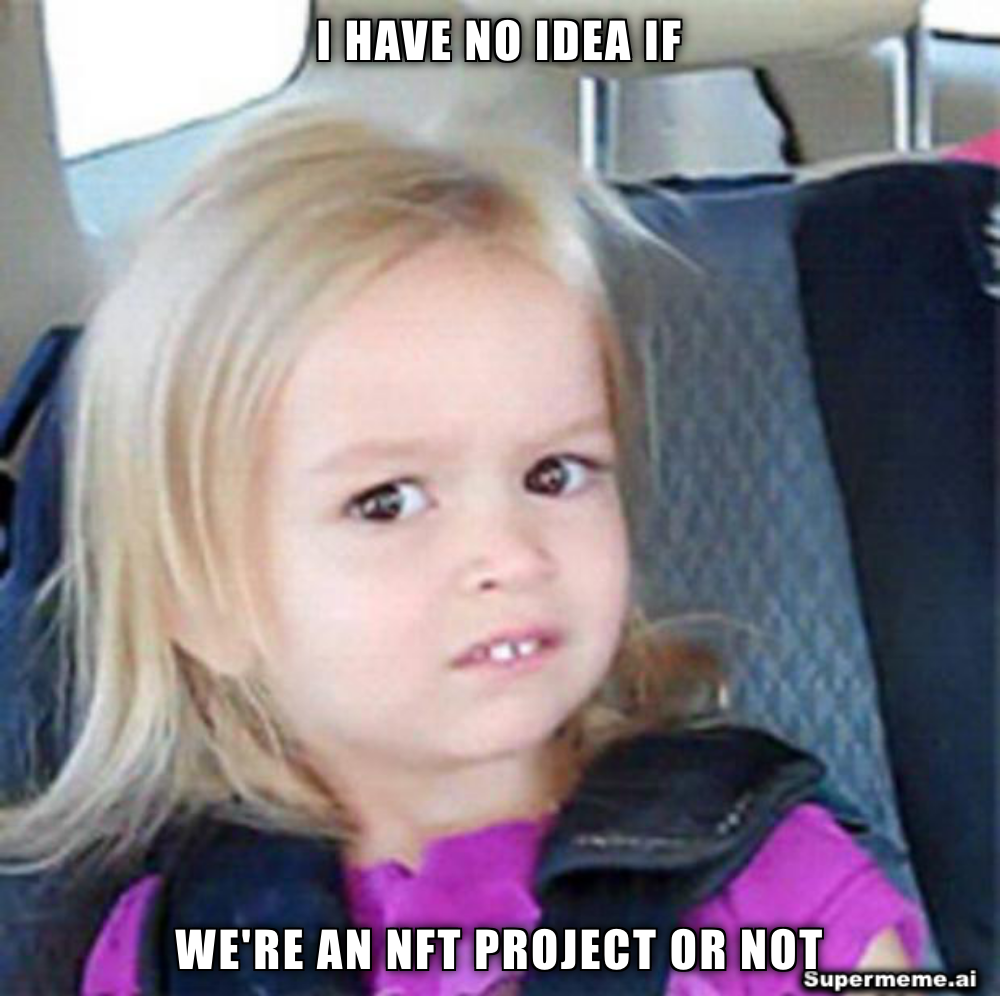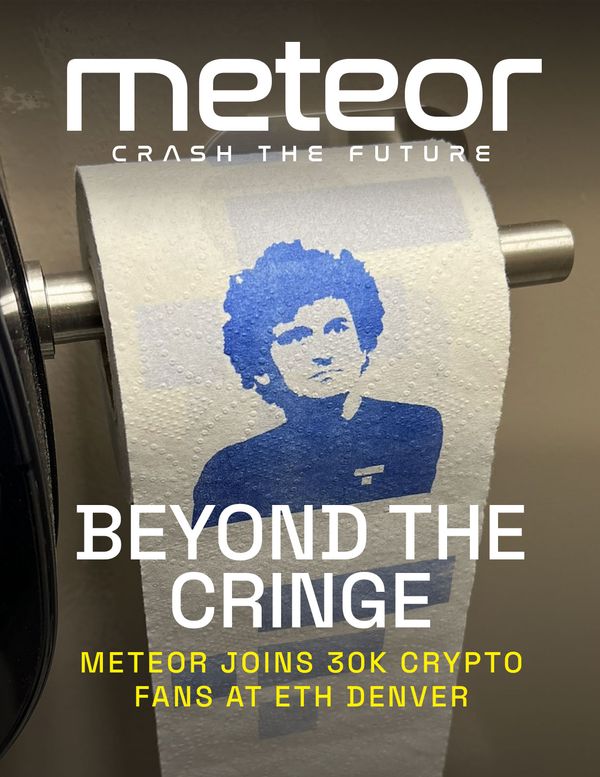Inside Today's Meteor
- Web3 Was Faking It. Now It Can Be Real.
- New AI Goodies
- Blue Chip NFT Project Doodles: "We're Not an NFT Project"
- Cool Tools: AI Cloak of Invisibility for Artists
- Meme of the day
Web3 Was Faking It. Now It Can Be Real.
A new decentralized Web protocol has dropped, and it looks like chocolate just landed in someone's peanut butter for the crypto libertarian code-is-law you-can't-censor-this kiss-my-ass crowd.
Tl;dr instead of writing http:// you can now type web3:// to see some NFTs and play some Web3 games and dApps on some Web browsers.
It sounds simple, but there's a lot going on under the hood that could change the way (some) information is stored and retrieved on the Internet, and for the whole decentralized permission-less proposition of Web3.
That's because Web3 is not really decentralized at all. Yet.

Blockchains are decentralized and have always been un-censorable in theory. Anything on Ethereum is stored permanently and can't be changed without shutting down the entire network, which would be hard. But until now, you still needed a Web server and http address (centralized!) to "see" the content on the blockchain in a browser. You could wake up one fine morning to find the URL to your Fuck Putin X-rated Web3 game de-listed. Still there but if no one can find it, does it exist? Whatever happened to satire?
No more.
Ethereum developers have found a way to bypass the http standard that makes the World Wide Web possible, and get straight to data stored on Ethereum smart contracts or the ENS (a crypto alternate to DNS, the Internet domain name system) without hitting Web servers that usually sit in the middle.
Web servers are hard points of control and soft targets for censors, easy to find, pressure and shut down, so removing them makes the system more resilient and decentralized. Running almost everything through centralized Web servers on the front end is a bit embarrassing for Web3, so it's a moment of pride for the home team, if not a really practical solution for much at the moment.
There are big tradeoffs.
Unlike the World Wide Web, blockchains were not really designed to store large amounts of arbitrary data, or easily search and retrieve it. It's expensive to put data on-chain and interact with it there. Currently, storing 1GB of data on Ethereum would cost about $10 million.
For this reason, lots of NFT projects host images and media on Web servers, and only store a link to the assets on the blockchain itself. NFT marketplaces are Web sites, with Web3 hooks like wallet logins, but still hosted on centralized services. To make it practical to store more media on a blockchain at scale, or consider the blockchain as a viable replacement for the Web, costs would need to come down by a factor of thousands.
More likely Ethereum will become an alternative for securing high value Web3 content, for example, whistleblower documents and blue chip NFTs, and not a replacement or even a competitor to the centralized Web.
People have been talking about creating a truly decentralized and un-censorable Web for a long time. There are already a few workarounds that practically get most of the job done if you're careful enough, for example, end-to-end encrypted communication and distributed data networks, like WhatsApp and the Interplanetary File System. But purists still consider the system vulnerable to concerted attacks and want more.
They just got it.
Create
We've become a little obsessed with all the new AI goodies released this week. Here's some of what we're up to.
We asked GPT-4 to predict what jobs it would replace. Hat tip to Rowan Cheung for the idea. A bit gloomy, we admit.

To be more optimistic, we asked GPT-4 what jobs would it create. The list is interesting, from AI ethics officer (Microsoft fired one of their teams last week) to AI medical specialist.

We played with Midjourney 5 as well. In fact, we asked it to redo yesterday's cover. Yesterday's issue was a quasi satirical look at OpenAI's pledge to be our guardians against runaway AI and profiteering. We tried to create an image of OpenAI CEO Sam Altman as the white knight to save us all. But the results just looked weird. We gave Midjourney 5 another crack at it. What a difference a day makes.

We're not the only ones playing. AI artist Claire Silver prompted GPT-4 to write code to create generative art.
Asked GPT4 to write p5.js code to make animated, generative art of eyes in 1920's American animation style, then pasted the code in @openprocessing's playground :) Simple start, but wowed by the accessibility AI+Code brings pic.twitter.com/XR8F5B1iIG
— Claire Silver 🌸 (@ClaireSilver12) March 15, 2023
Khan Academy, the non-profit education platform that taught millions with their free Youtube videos is creating AI tutors.
Did you hear? 👀 Khan Academy is using GPT-4 from @OpenAI to shape the future of learning.
— Khan Academy (@khanacademy) March 14, 2023
Starting today, you can sign up to test our AI-powered guide, Khanmigo. A tutor for learners. An assistant for teachers.
Come explore with us! ✨
And Javi Lopez used GPT-4 to create a low-fi (very low-fi) version of the video game classic Doom in minutes.
Create a basic 3D game prototype like Doom using GPT-4.
— Javi Lopez ⛩️ (@javilopen) March 15, 2023
Let GPT do all the maths, raycasting and hard work!
🧵 A thread pic.twitter.com/IZgSlj4QTO
Quick Hits
Doodles Diddles
"Blue chip" NFT project Doodles tanks after declaring it is not an NFT project.
AI Gets Spliced into Software DNA
Integrations like Microsoft's GPT-4 powered 365 Office suite and Google's PaLM powered Web apps point to a future where AI is everywhere, and AI startups are nowhere.
We Should Have Called It ClosedAI
OpenAI founder says AI is too powerful and dangerous to open source, "We were wrong."
Shanghai'd
Crypto world holds its breath for the Shanghai Ethereum fork due April 12, that will free funds from its Proof of Stake protocol for the first time.
Baidu Bumbles
China-based social network stock tumbles on debut of its ChatGPT rival Ernie.
Tick Tock for TikTok
More Western countries weigh in with demands to sever China ties with short social video platform phenom, will it survive?
Cool Tools
AI Cloak of Invisibility
Academics release a tool to help artists hide from the gaze of generative AI image crawlers.
No Need to Shout
AssembyAI says its Conformer speech recognition model is the best.
I'm amazed at how great Stable Diffusion is for photo restoration! #AIArt#StableDiffusion2 / #StableDiffusion pic.twitter.com/JwKejALqY6
— Stable Diffusion 🎨 AI Art (@DiffusionPics) March 16, 2023
Meme of the Day



